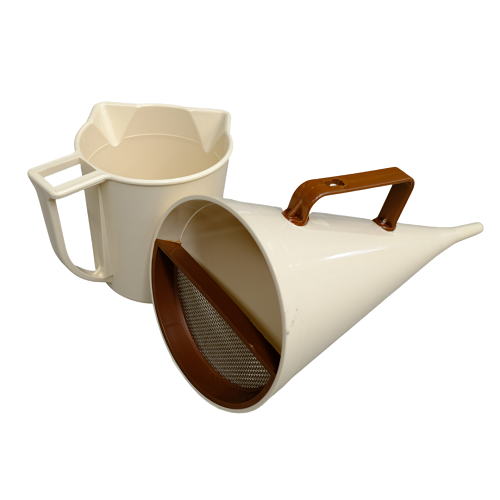Marsh Funnel Viscosity Measurement
The Marsh funnel is used in the field to routinely measure the viscosity of drilling mud. This test is not about absolute viscosity but a quick, repeatable way to compare fluid flow characteristics in the field.
The limitation of the Marsh Funnel is that the viscosity is measured at only one rate of shear and the sample is not at a constant temperature and therefore does not give an accurate representation of the flow properties of a drilling fluids. However, it is a quick, simple test and provides a tool for spotting changes or trends in a circulating drilling fluids, particularly with water base mud.
It has a top diameter of 6 inches and a length of 12 inches. At the bottom, there is a smooth-bore tube that is 2 inches long with an inside diameter of 3/16 inch. This tube is attached without any restriction at the joint. A wire screen with 1/16-inch openings covers half of the funnel and is positioned 3/4 inch below the top.

Procedure
- Hold the funnel upright, cover the outlet with your finger, and pour a freshly collected mud sample through the screen into a clean funnel until the fluid level reaches the bottom of the screen (1,500 mL).
- Remove your finger immediately and measure the time it takes for the mud to fill the receiving cup up to the 1-quart mark.
- Record the time in seconds as the Marsh funnel viscosity and report the fluid temperature in degrees Fahrenheit or Celsius.
- For reference, the viscosity of fresh water at 70°F (21°C) is approximately 26 seconds. if mud takes 50 seconds to drain 1 quart, its viscosity is roughly twice that of water under the same conditions
The reason for filling the Marsh funnel with 1,500 mL
The reason for filling the Marsh funnel with 1,500 mL of drilling fluid while only measuring the time for 1 quart (946 mL) to flow out is based on consistency, accuracy, and historical standardization in viscosity measurement. Here’s the technical reasoning behind this:
Ensuring a Consistent Hydrostatic Head
- The extra volume (1,500 mL instead of 946 mL) ensures that the fluid in the funnel has a consistent pressure or hydrostatic head at the start of the test.
- If the funnel were filled with just 946 mL, the level of fluid would decrease immediately as it starts flowing, affecting the pressure and causing variation in viscosity readings.
- By filling to 1,500 mL, the initial height of the fluid above the orifice remains the same in every test, ensuring repeatable and comparable results.